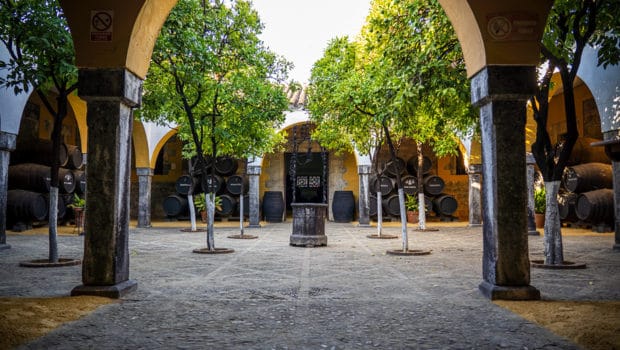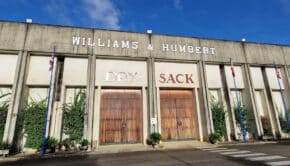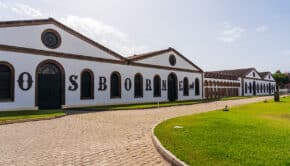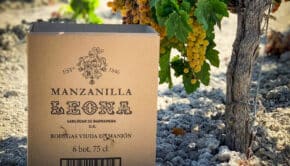Visiting Bodegas Diez-Mérito
After getting my certification as a Sherry Educator in 2018, I had a free Saturday in Jerez before flying back. It turns out visiting a bodega on a Saturday (or Sunday) is quite difficult, I believe you’re more or less limited to Lustau, González Byass (both of which I already visited)… and Diez-Mérito. The limited choice was not a hardship at all. Díez-Mérito had been on my shortlist for a long time, because of its beautiful architecture, but also because of its VORS wines, more specifically the legendary Fino Imperial.
Díez Hermanos + Marqués del Mérito
The history of Diez-Mérito is rooted in two important family bodegas. It started as Bodegas Diez Hermanos in 1876, founded by two brothers (later three), primarily exporting to the South of France while keeping their wines in a large facility accross the train station in Jerez. They took over a list of other bodegas (Ysasi, Riva & Rubio and Fuentes Parilla) and in the early 1900s they were quite an important shipping company and a supplier to the Spanish Royal Family. They restored the former cloister of Santo Domingo in 1908 and the Alcazar of Jerez in the 1920s, and they were responsible for bringing the first trains to Spain.
The other branch of the company was Bodegas Marqués del Mérito, set up by the 2nd Marques (the Lopez de Carrizosa family) in the second half of the 19th century. The firm was taken over by Diez Hermanos in 1979 and became Diez-Mérito, with an extensive range of vineyards and bodegas. However in 1981 they were swallowed by the infamous Rumasa group, which soon brought an end to the success story.
After the expropriation the bodegas belonged to the Federico Paternina group (1985-2016). After the death of the owner, Díez-Mérito was sold and is now in the hands of the Espinosa family, which have owned vineyards around Jerez since the 1980s and are also involved in Covijerez, one of the biggest grape growing / vintners cooperatives.
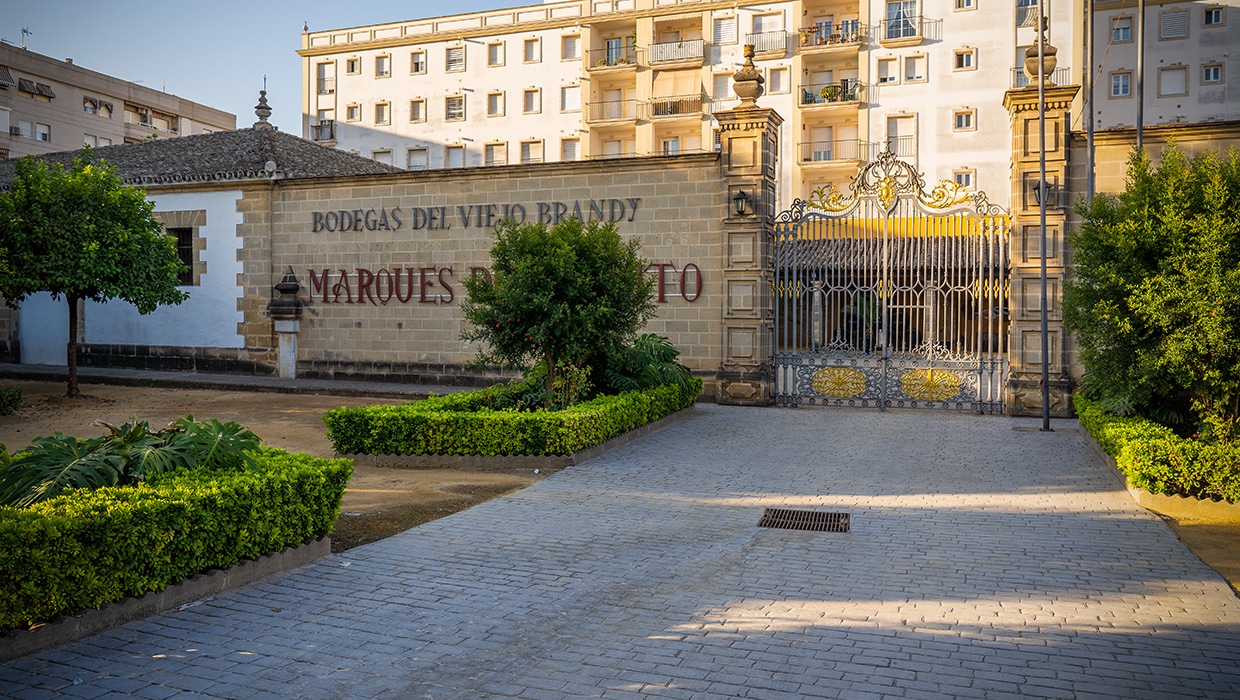
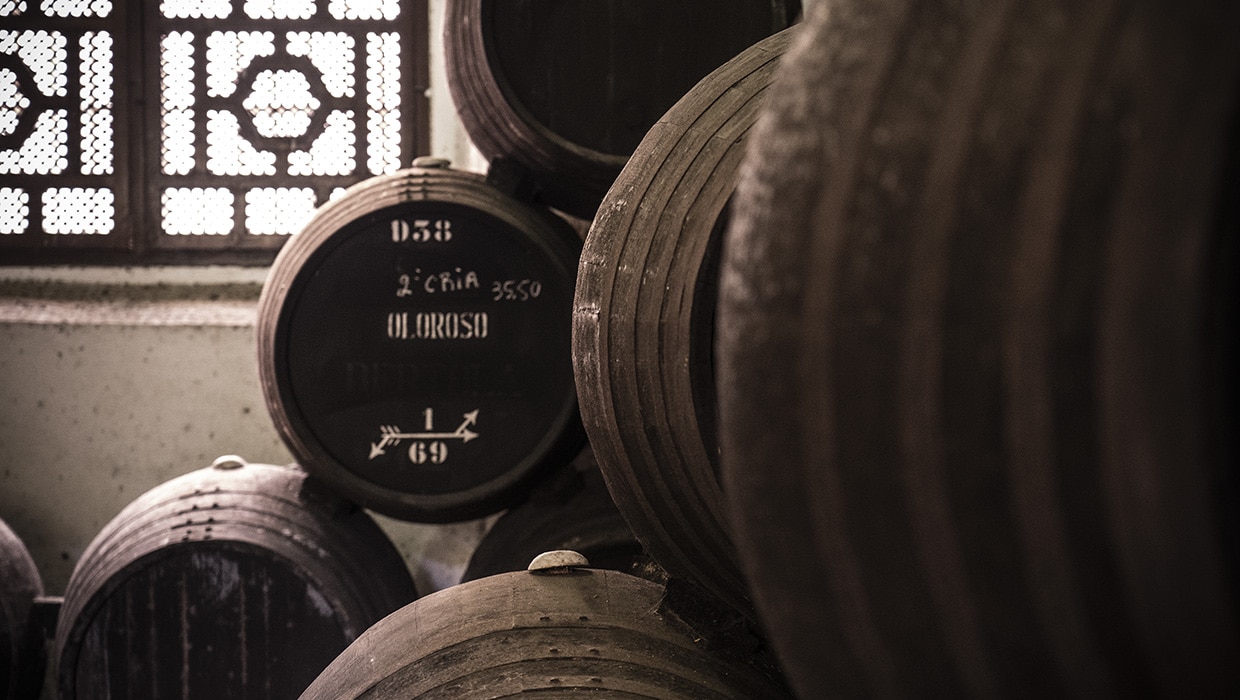
Bodega Bertemati
Diéz-Mérito has several bodega blocks but the most emblematic of all is the Bodega Bertemati, which is also where the visits are held. This beautiful building was constructed in 1790 and gets its name from one of the first owners, Manuel Misa y Bertemati who was named the Marqués de Misa. Originally the bodega complex occupied 17 naves, from the current-day bodega all the way to the train station of Jerez: a whole neighbourhood with streets and buildings surrounded by a wall.
You approach the bodega from a small square on the Calle Diego Fernández Herrera and the first thing that grabs your attention is the French front garden and the beautiful gate. This could be the palace of a marquess indeed. However the visitors entrance is to the side, with slightly less grandeur. Once inside, I was led to an inner courtyard called Patio de los Naranjos, which has a central well and is filled with orange trees. The archways, the trees, the barrels all around, the tiled roofs and the black / white / ocre tones give this place a special atmosphere.
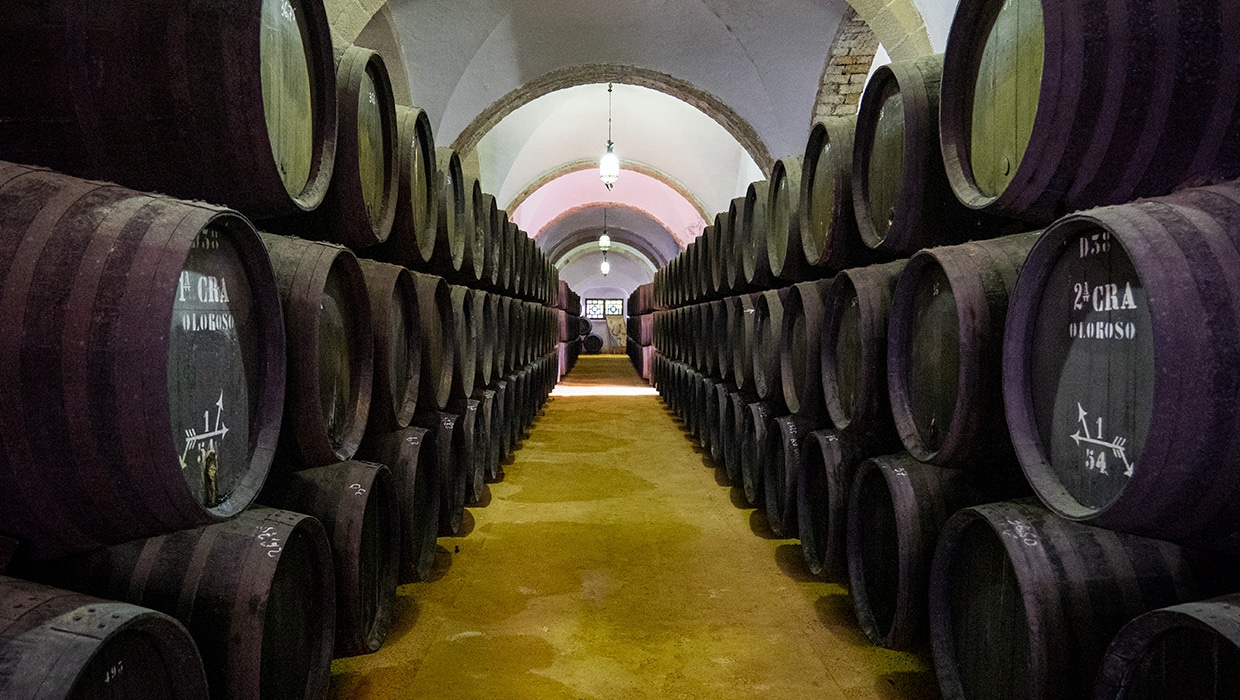
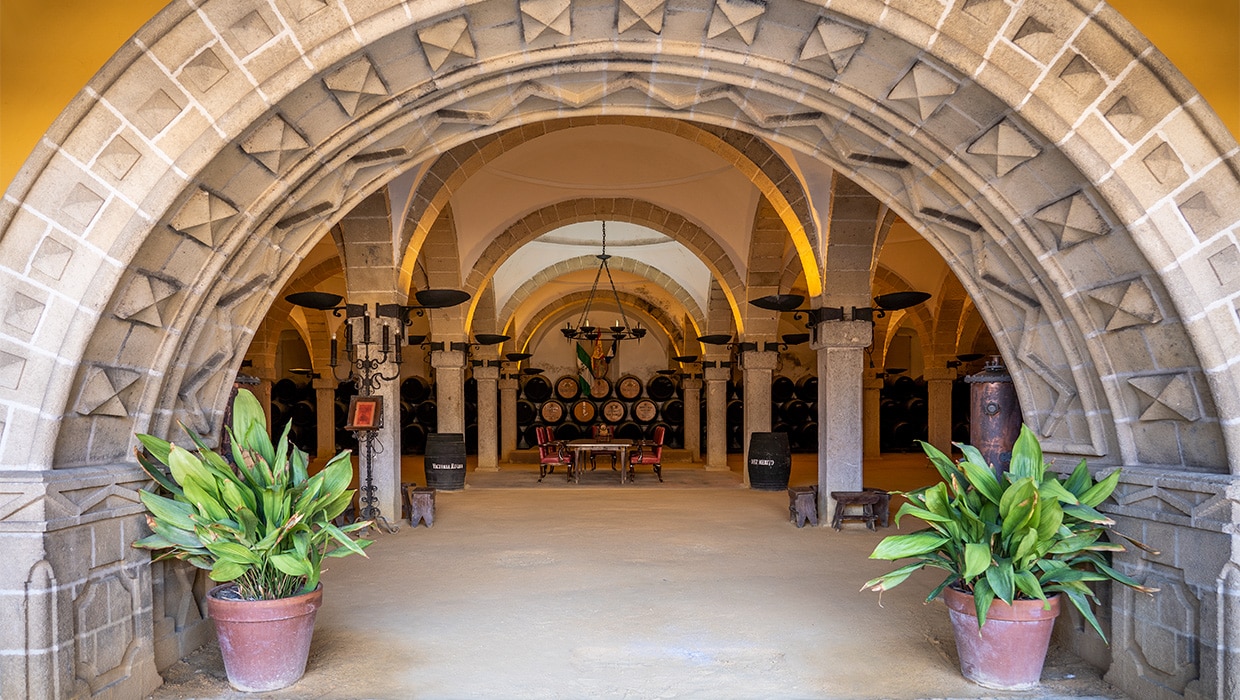
Visiting the bodega
It’s clear that this is an early bodega, with fairly low ceilings and very thick walls, not the typical cathedral-style. The vaulted structure adds to the architectural appeal and gives it a unique design that I haven’t seen anywhere else in Jerez.
The first part of the tour brings you past soleras of Amontillado, Palo Cortado and Oloroso. I noticed they don’t seem to be organized in a particular way: you find different types of wines next to / on top of each other in the piles of barrels, sometimes barrels of brandy as well. I’m sure there is a reasoning behind the actual distribution but it’s difficult to figure out for outsiders.
Further down the tour there is the Sacristía which houses a few ‘honorary’ barrels from different soleras. This brings us to the big Patio de las Columnas that you see behind the gate and the garden. Across this patio there is the Salón de Cúpulas (“hall of domes”), a majestic room that houses some of their most exclusive barrels of brandy, leading up to the centenary Brandy Marqués del Mérito. Nowadays it is often used for weddings and events and probably the most photogenic place of the whole bodega complex.
The winery is certainly not the biggest in the region, so a tour only takes about one hour and may not give you the same depth of information that you can get from other bodegas, but it does showcase a special type of architecture, which makes it well worth your time. Here’s a recent video impression of the buildings:
Díez-Mérito wines
The house has three ranges of wines: Pemartin (another old brand that got swallowed by Rumasa and ended up in the Federico Paternina group – their bodega El Cuadro across the road now houses the Díéz-Mérito shop), Mérito for their Brandy de Jerez and Bertola, which is also the range that visitors can try after the tour.
I was pleasantly surprised by the quality of the Bertola range: especially the Palo Cortado and the Amontillado Bertola are high quality wines (and great value for money at around € 15-20). All oxidative wines in this range (Amontillado, Oloroso, Palo Cortado, PX) have the 12 years old age statement by the way, and some are a bit older.
However the treasures of the house are three VORS wines, all from very old soleras:
- Oloroso Victoria Regina
- Pedro Ximénez Vieja Solera
- Fino Imperial, which is actually an Amontillado.
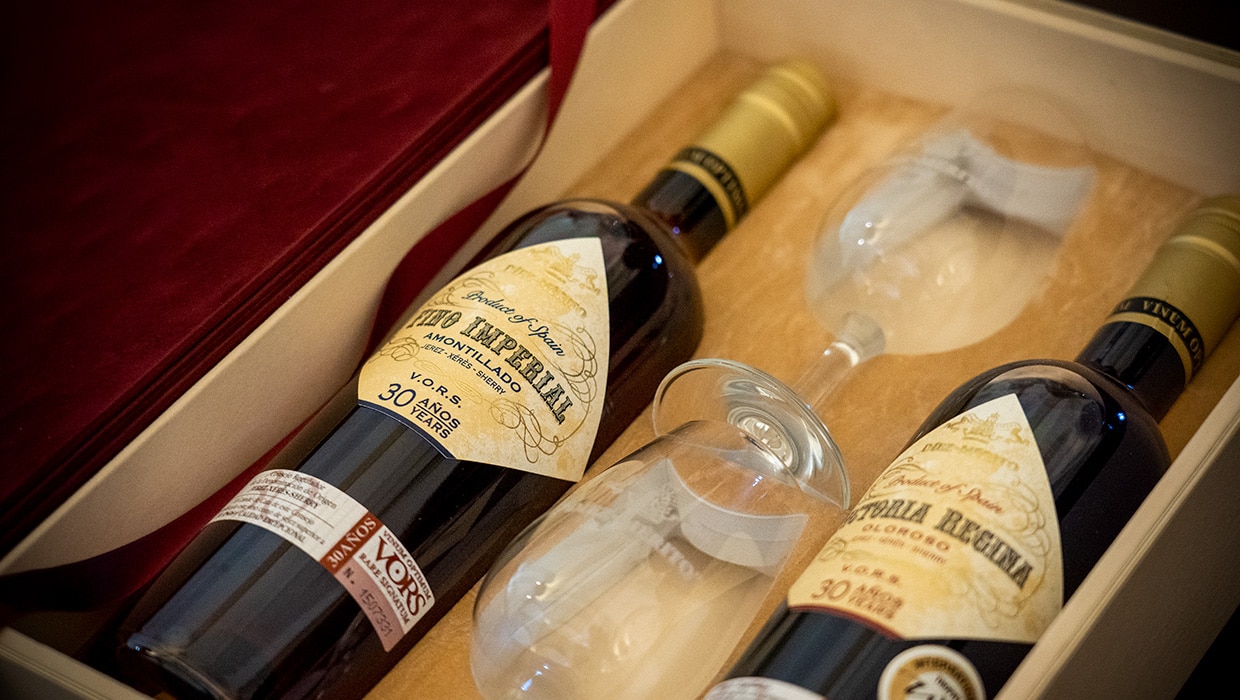
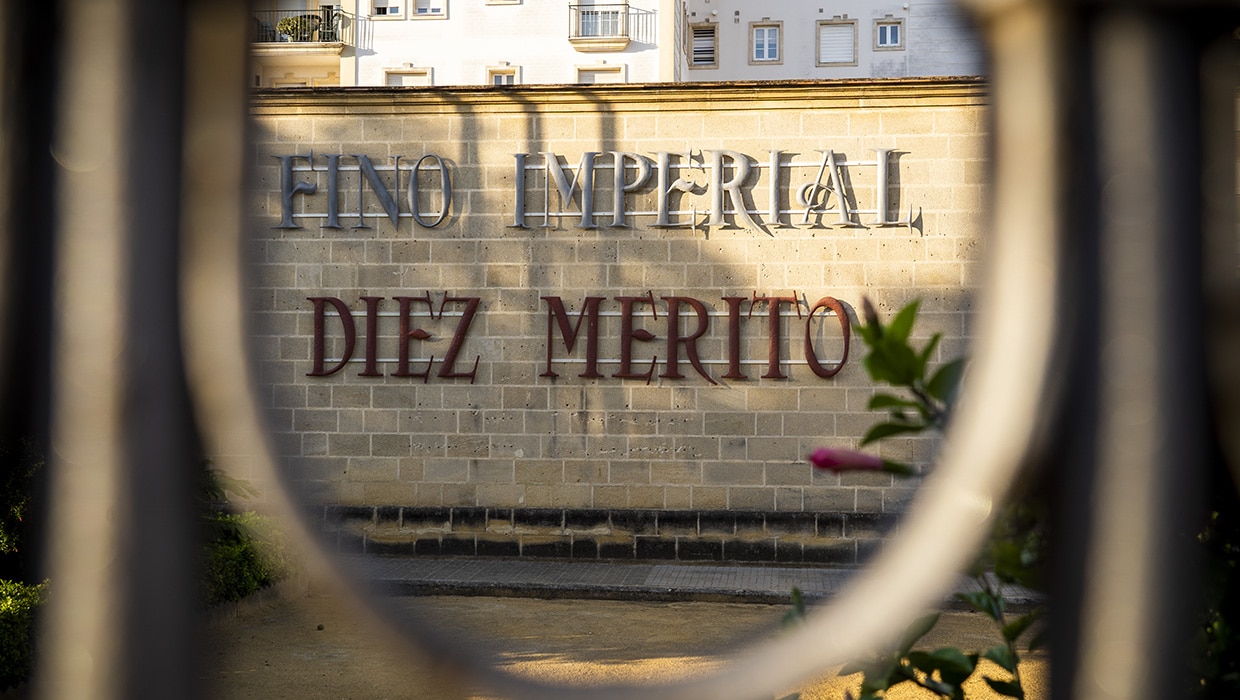
Fino Imperial
While I also tried the Oloroso Victoria Regina (highly recommended), for me the Fino Imperial is the most extraodinary wine. It has an excellent reputation as one of the legendary wines of the sherry region. Its origins are in the bodegas Diez Hermanos. It starts ageing under flor during the first five years. After that the flor starts to disappear naturally (which is very rare nowadays – most of the time this happens through additional fortification).
It then ages further in a solera system of six stages, resulting in an Amontillado of over 30 years. While it has been maturing in Jerez, at some point it was refreshed with Manzanilla to preserve its delicate, elegant character. Now they use a mature Fino wine.
Fino Imperial has a beautiful amber colour. On the nose you’ll find luscious vanilla, dried fruits, caramelised notes, toffee and polished oak. On the palate it has a bracing focus but a lot of roundness and elegance as well, which is sometimes missing in wines of this age. There are still some yeasty traces, hazelnuts and tobacco. Just a hint of peppery oak in the finish. Read more about the exceptional Fino Imperial in my separate article.
Houses like Díez-Mérito are equally interesting for their long history and balanced wines, coupled to a renewed interest and refreshing enthusiasm from the new owners. Next time you’re in Jerez, don’t go for the well-known big bodegas right away, but give Díez-Mérito a place on your to-do list as well.
For more information about visiting Diéz-Mérito, check their website.


